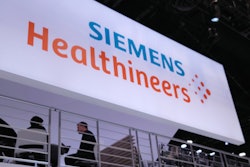Dear Molecular Imaging Insider,
The U.S. Centers for Medicare and Medicaid (CMS) is expected to announce a proposal on December 16 to change its coverage of amyloid PET scans for individuals in Alzheimer's disease clinical trials. Currently, participants are limited to a single scan per lifetime, and the CMS decision could have a major impact on how new treatments are evaluated. Check with us on Friday for the news.
On topic, researchers at McGill University in Montreal, Quebec, recently noted the importance of amyloid PET scans for identifying Alzheimer's disease brain pathology, but they also highlighted the complexity of associations between beta-amyloid plaque deposits on PET and other potential biomarkers, namely blood levels of phosphorylated tau (p-tau). Read about the research in this edition's Insider Exclusive.
For more about the potential of p-tau biomarkers, read our article on a study that pitted p-tau181 against tau PET for identifying Alzheimer's disease pathology and predicting clinical progression.
RSNA 2022 wrapped up on December 1, and we were on hand in Chicago to highlight nuclear medicine and molecular imaging research presented at the meeting. Among the most read write-ups we published was a study showing that gallium-68 DOTATATE PET/CT may reduce biopsies in patients with neuroendocrine tumors.
Below are a few other studies we covered at RSNA 2022, with PET imaging taking center stage:
- A group at Leeds Teaching Hospital in the U.K. suggested that an artificial intelligence (AI)-assisted software tool can trim PET/CT reporting time in lymphoma staging without adversely affecting report quality.
- F-18 fluorocholine PET appears effective in detecting tumors in patients with primary hyperparathyroidism, according to a group at the University of California, San Francisco.
- Mayo Clinic researchers in Rochester, MN, presented a clinical trial that suggests gallium-68 prostate-specific membrane antigen (PSMA) PET imaging improved management in more than 70% of patients with prostate cancer.
- F-18 DCFPyL (Pylarify) PET/MRI appears useful for determining whether men with low-risk prostate cancer are candidates for focal ablative therapy, according to a presenter from the University of Toronto.
As for SPECT, we've covered a study suggesting that AI has caught up to the modality, with researchers proposing the use of a myocardial perfusion imaging (MPI) model that could help clinicians identify patients at risk for major adverse cardiac events.
Another SPECT study suggested that MPI may be better than coronary angiography for predicting patient survival after coronary artery bypass surgery.
We are also keeping an eye on fibroblast activation protein inhibitor (FAPI) radiotracer development, with one recent study by Chinese researchers suggesting F-18 FAPI-04 PET/CT scans can predict outcomes in patients with locally advanced esophageal squamous cell carcinoma.
Finally, with worldwide supplies of molybdenum-99 (Mo-99) seemingly on a razor's edge, we highlighted a breakthrough in physics research that could one day help increase its production for medical imaging. A group in Swierk, Poland, received a patent for a method for preparing low-enriched uranium-235 (Mo-99's parent isotope) for irradiation by neutrons using 3D printing technology.
That's all for now. Be sure to check back regularly for more news in your Molecular Imaging Community!





















